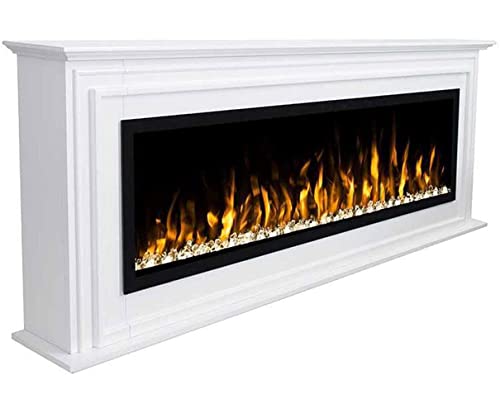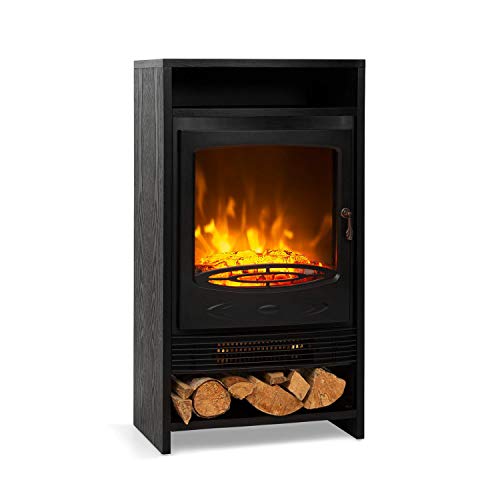
Choosing a Fireplace Surround

If you're using a fireplace to provide aesthetics or warmth, choosing the right surround can give your living space a unique. But choosing a fireplace surround that meets code and is safe can be a difficult task.
These custom-built surrounds are built from non-combustible materials and adheres to the National Fire Code. They can look great in any style home.
Simple Concrete Surround with Slabs of Marble
A fireplace surround is a focal point for the room, and can bring warmth and charm. It can be constructed from various materials and designed to suit a variety of design styles. It is important to think about the design of the room and the budget before choosing the design of a fireplace surround.
Marble fireplace surrounds offer a sophisticated look that complements a variety of design styles. They can be paired with rustic woods or more modern metals to create a unique, modern design. Marble is easy to maintain, and can withstand high temperature making it a good choice for a surround.
Stone is a popular material for fireplace surrounds and provides a timeless look that is suitable for many homes. It can be carved and cut to give it a more contemporary appearance or left unfinished for a more traditional feel. Stacked stone veneers can also be used to add depth and texture to the interior of a room.
Granite is a popular choice for modern fireplace surrounds because it is durable and able to heat very well. It also comes in a variety of patterns and colors so it can be used to create a variety of design styles. Quartzite can also be made into a shape and molded to fit a modern surround.
Installing a concrete surround for a fireplace could be a possibility for DIYers. It may seem like a daunting task however it's more simple than you imagine if you work with an expert and prepare ahead.
A professional is also recommended when building a
marble fireplace surround because it requires a lot of attention to avoid damage. A carpenter who has experience can help you to avoid costly mistakes.
If you plan to use tile as a fireplace surround, you must make sure it's suitable for high temperatures. This information is typically found on the label or ask a staff member at an improvement store for.
Leaning Frame Surround
The fireplace surround can completely transform an area. It's not only meant to look attractive, but also has a functional function that is to shield the wall behind the fireplace from fire damage and to reflect heat away from the room. It is available in a variety materials and can be customized for any style or decor.
Selecting the right material for the frame's leaning surround is key to creating an intentional design. Concrete is a great option because it's durable and non-flammable. It also has a lot of visual appeal due to its natural texture and colour. It's typically poured into a mold, giving you the ability to create a unique shape for your fireplace surround.
When designing your leaning frame, be sure to add layers. This makes the frame appear more planned as opposed to being randomly placed. If you plan to display heavy items such as lamps or vases on leaning frames, place a piece of lining for drawers made of rubber under the base. This will stop them from sliding or damaging surfaces.
Consider adding a wooden board to the bottom of a concrete or a marble surround. This will help keep it in its place. It will also help reduce the weight and keep the object from shifting while you sip your cup of coffee or wine in front of your fireplace.
After you've decided on the material, it's time to construct the actual piece. Begin by marking the wall you're building with the dimensions of your surround and then use a saw to cut cleats at each of these marks. Make sure that the top cleat of the shelf is at a minimum a foot shorter.
Screw the brackets on the wall. Make sure that the bolts go through the backerboard and into the stud. If necessary, drill the screw holes. Then, temporarily clamp the mantel on the backer board. Attach the mantel using lag bolts (2-4 bolts per stud). Make sure that the bolts are sufficient to cover 2/3 of the mantel's thickness + the thickness of the backer board.
Black Firebox Surround
Fireplace surrounds serve both an aesthetic and a functional function. They protect walls from damage caused by heat and also help to redirect some of the heat back into the room and can create a fireplace that is a focal point in a room. Wood and metal are the most commonly used materials used for fireplace surrounds. Metal surrounds may be required by building codes to protect nearby combustible surfaces or they can simply enhance the aesthetic of a fireplace to make it look complete.
The fireplace in this contemporary living space has the black firebox surround, with white marble accents. The marble is more expensive and requires more maintenance than wood, but it provides a striking design feature to the space. The black finish also ties together the dark tones in the wood flooring and furniture for an overall design.
Concrete is not just for sidewalks and driveways. It's also a beautiful and versatile material that can be used to cover fireplaces. It can be shaped into custom shapes and poured into place, providing nearly limitless design options. This concrete surround was shaped to create a curved design. It creates modern and sleek appearance that contrasts the darker shades of the brick wall and flooring.
Another popular material for
fireplace suite surrounds is wood which comes in a wide variety of colors and textures to complement any decor scheme. Wooden surrounds can come in any shade to fit your hearth pad. They are lighter and more affordable than brick surrounds. Most wooden surrounds can accommodate decorative items for the mantel, including vases and lamps.
Some wood surrounds have a faceplate which covers the mantel's top and houses doors for
ethanol fireplaces. The faceplate can be attached with decorative fasteners or hinges which resemble the appearance of iron.
It is crucial to take into account the size of your fireplace when choosing a mantel made of
wood fireplace. To prevent a fire spreading to your home, building codes stipulate minimum clearances. The distance will differ based on the type of fireplace, and may also vary from country to country or state to state.
Simple Wood Surround
If you'd like your fireplace to have a traditional wood appearance, there are different kinds of surrounds available for purchase. Some surrounds are made of solid oak and others have a combination of materials including stone legs matched with pine or oak mantels. You can also pick from pine or oak fire surrounds which are designed to be a low-cost and simple option.
Many people prefer to purchase a pre-made fireplace surround as it's an economical way to achieve the look they want without hiring carpenters. Some of the pre-made pine fireplace surrounds are available in a range of different finishes to make it a part of your existing decor.
A hand-crafted wood fire surround made from high quality oak is also popular. It can be stained with an oak-like light color or left untreated so that the natural golden brown of wood can be seen. This fireplace surround is suitable for wood or gas burning fires and can be fitted either with a flat or arched opening.
For those who have more experience in DIY home improvement projects, there are plenty of tutorials available online to assist you in creating your own wood fire surround. This comprehensive step-bystep guide from H2O Bungalow will show you how to create an attractive wood surround with pine.
The tutorial shows you how to build first the horizontal component before building the vertical pilasters that support the mantel.